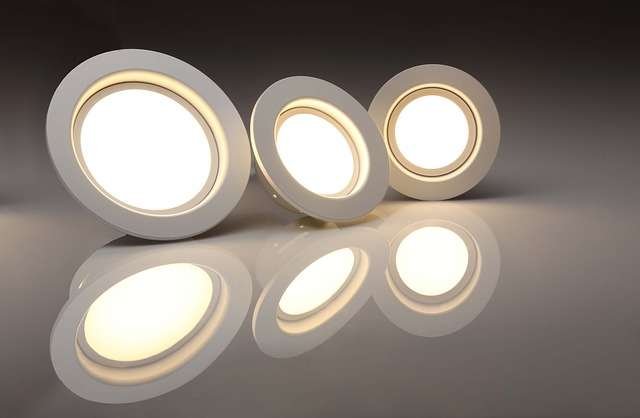A well-planned outdoor security lighting setup is one of the most effective ways to deter trespassers, enhance visibility, and improve safety on your property. Whether you’re securing a residential home or a commercial space, strategic lighting can make all the difference in preventing crime and reducing potential hazards. In this article, we’ll explore the best practices for optimizing your outdoor security lighting setup to ensure maximum effectiveness and efficiency.

Why Outdoor Security Lighting Matters
Outdoor lighting serves as a critical layer of security by illuminating dark areas, making it harder for intruders to hide and easier for surveillance cameras to capture clear footage. Additionally, a well-lit exterior increases safety by reducing the risk of trips and falls for residents, employees, and visitors. Studies show that properly installed outdoor lighting can significantly decrease the likelihood of criminal activity.
Best Practices for an Effective Outdoor Security Lighting Setup
1. Conduct a Security Assessment
Before installing outdoor security lighting, conduct a thorough assessment of your property to identify vulnerable areas. Walk around the premises at night to determine dark spots, blind corners, and entry points that need better illumination. Consider the following:
- Entryways and exits – Doors, windows, and garages should be well-lit.
- Pathways and driveways – Ensuring safe navigation for pedestrians and vehicles.
- Perimeter fencing – Helps prevent unauthorized access.
- Backyard and side yards – Areas often targeted by intruders.
- Parking areas – Reduces the risk of vehicle break-ins and vandalism.
2. Choose the Right Type of Lighting
Different types of lighting serve different purposes in a security setup. Consider using a combination of these options:
- Floodlights – Provide broad, high-intensity illumination ideal for driveways, backyards, and large open areas.
- Motion-activated lights – Turn on only when movement is detected, conserving energy while startling potential intruders.
- Pathway lights – Enhance safety along walkways and driveways.
- Wall-mounted lights – Ideal for entry points and garage doors.
- Smart security lights – Can be integrated with home automation systems and controlled remotely.
3. Use Motion Sensors for Efficiency
Motion-activated lighting is a game-changer in outdoor security lighting setup. These lights only turn on when they detect movement, surprising unwanted visitors while saving energy. Position motion sensor lights strategically near entry points, driveways, and along pathways to ensure they activate when needed.
4. Install Timers and Smart Controls
Using timers and smart controls can enhance the effectiveness of your security lighting system. Consider options such as:
- Dusk-to-dawn sensors – Automatically turn lights on at sunset and off at sunrise.
- Smart home integration – Allows remote control via smartphone apps.
- Scheduled lighting – Ensures lights turn on and off at specific times, giving the impression of occupancy even when you’re away.
5. Avoid Overlighting and Light Pollution
While bright lighting is beneficial, too much illumination can cause light pollution, creating glare and shadows that intruders can exploit. To optimize security:
- Use shielded fixtures to direct light where it’s needed.
- Opt for warm or neutral light temperatures instead of harsh blue-white light.
- Balance brightness levels to avoid overly lit areas that contrast with dark spaces.
6. Regular Maintenance and Upkeep
Security lighting requires regular maintenance to remain effective. Replace burnt-out bulbs, clean light fixtures to remove dirt and debris, and ensure motion sensors function correctly. Consider using LED bulbs for longer life and better energy efficiency.
7. Integrate with Security Cameras
Pairing outdoor security lighting with surveillance cameras can significantly improve property protection. Well-placed lighting ensures that cameras capture clear images and videos, making it easier to identify individuals and activities. Motion-activated lights can also alert security systems to potential threats in real-time.
8. Consider Solar-Powered and Energy-Efficient Options
For eco-friendly and cost-effective solutions, opt for solar-powered security lights or LED bulbs with low energy consumption. Solar lights are ideal for areas without easy access to electrical wiring and can function effectively with proper placement and battery storage.
9. Secure Lighting Fixtures Against Tampering
To prevent criminals from disabling security lights, ensure fixtures are securely mounted and positioned out of easy reach. Use tamper-resistant screws and protective casings to safeguard lights and wiring against vandalism.
10. Comply with Local Regulations
Some areas have regulations regarding outdoor lighting to prevent excessive light pollution or disruption to neighbors. Check with your local municipality to ensure your security lighting setup adheres to guidelines on brightness levels, fixture placement, and energy consumption.
Final Thoughts
An effective outdoor security lighting setup is a crucial investment in property protection. By strategically placing lights, utilizing motion sensors, and integrating smart controls, you can create a safer environment while deterring potential intruders. Regular maintenance and energy-efficient choices further enhance security while keeping costs manageable. Implement these best practices to achieve an optimized outdoor security lighting system that provides peace of mind for you and your loved ones.

